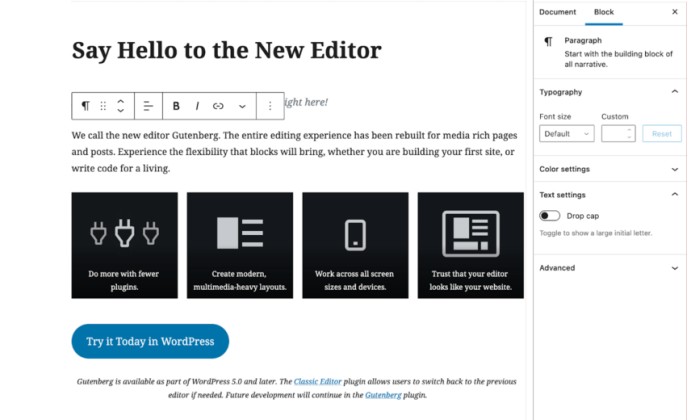Substack Alternatives: 11 Newsletter Platforms & How They Work via @sejournal, @BrianFr07823616
If you're looking for more affordable or flexible options for your digital newsletters, look no further than these top 10 alternatives. The post Substack Alternatives: 11 Newsletter Platforms & How They Work appeared first on Search Engine Journal.

Traditional media companies have struggled in the digital age.
As more people opt out of physical formats like newspapers and magazines, some employment numbers in the industry have steadily declined.
But out of this, new opportunities have arisen, including the birth of email newsletter subscriptions.
Substack, a foremost name in this field, was founded in 2017 and quickly became a game changer for online content creators.
With a user-friendly interface and robust functionality, it allows writers and creators to publish and monetize branded web content via monthly subscriptions.
A minimal amount of moderation and publishing guidelines provide creators with a somewhat unprecedented level of freedom, while also giving them total ownership over content, mailing lists, and intellectual properties.
An all-in-one publishing platform, it offers everything from community-building advice to legal support.
As for its pricing structure, Substack charges publishers 10% of gross revenue, plus a processing fee.
While it’s easy to start, some creators have found Substack’s features limiting.
With that in mind, we’ve created a list of Substack alternatives to consider if that platform isn’t serving your needs how you had hoped.
1. Write.as
With a clean design and interface, Write.as offers content creators and publishers a custom domain, a wide range of support, and built-in RSS in an ad-free platform that focuses heavily on privacy and security.
Pricing:
Pro – $72/year or $9/month. Small publisher support – $400/year or $45/month. Submission management – $144/year + base subscription.Small publisher support provides priority support, live chat, and consulting services.
Users can also add submission management to either plan to simplify submission gathering and publishing.
If you want to be extremely creative, this may not be your best platform, as features are limited.
For one thing, it only offers three different fonts: Serif, sans-serif, and monospace.
However, because it is an open-source platform, tech-savvy users can customize it to suit their own needs.
2. Ghost
Ghost is another open-source platform from which you can run your media business, send newsletters, manage subscribers, and publish gated content.
Cleanly designed, it has built-in SEO tools and plugins that simplify content optimization and integrate with numerous apps.
Pricing:
Basic – $348/year or $36/month. Standard – $948/year or $99/month. Business – $2,388/year or $249/month.As for Ghost’s drawbacks: It offers limited opportunities for monetization outside of monthly subscription plans.
3. Patreon
Providing a variety of ways for you to provide exclusive content to paid subscribers, Patreon allows you to build direct connections with your audience.
Used by musicians, podcasters, video creators, and writers, it provides more options for revenue.
Creators can make their own subscription tiers with different content available at each level.
For Patreon’s pricing, it’s free to use, but charges creators 5%–12% of gross revenue, plus a payment processing fee.
4. Letterdrop
Newsletter and blog publishing platform Letterdrop integrates into your marketing CMS and was designed to help grow traffic.
Newsletter creators can earn money through subscriptions, sponsorships, or paid content for other publications.
Letterdrop stands out from other platforms due to its content workflow, content calendar, and approval process.
It allows you to rank content ideas based on your objectives and their SEO potential, making it easiest to decide what to write about.
Content can be published via blog or SEO-optimized newsletters. Creators are provided with analytics to help track performance.
Pricing:
Small business – $1,188/year or $119/month. Growth – $3,588/year or $349/month.5. Steemit
Steemit combines blogging with social media and cryptocurrency.
A voting system similar to Reddit’s allows users to earn a share of revenues from its own cryptocurrency.
The first social media and blogging site built on blockchain, content earns money by increasing engagement.
Content creators, curators, and commenters can all get paid.
It currently has over 1.2 million users and is part of the Tron network.
Steemit is not the easiest platform to get started on.
Building a reputation and increasing engagement can be a slow process if your content does not go viral.
Also, it pays out in STEEM cryptocurrency, which is $.25 to the dollar at the time of writing.
Pricing: Free to use.6. Medium
Medium is a popular blogging and digital publishing platform.
It has nearly 100 million monthly readers and is free to use.
Used by both fledging writers with no experience and media publications, its Partner Program pays writers with more than 100 followers based on article read time.
It has a curated newsletter feature that allows creators to content to subscribers. And both the publishing and newsletter features are free to use.
7. Revue
Part of the Twitter network, Revue makes it easy for newsletter creators to distribute content and get paid.
With a business model built on curation, it includes a high-quality newsletter editor with useful features like a browser extension that makes it easy to add articles from the web to your newsletter.
You stay in control of your audience and can grow your following using Twitter.
Analytics give you insights into engagement, click rates, and opens.
A free option is available, but you must have a premium plan for monetization. Revue charges 5% of revenue, plus a processing fee.
8. HubPages
Using a revenue-sharing model, HubPages monetizes user-generated content.
While it’s not as popular as Medium, it has built-in monetization, in which creators earn money based on article views.
These are then factored into a formula to determine a piece’s contribution to paid advertisement success.
HubPages is very intuitive and free to use.
It also includes options for free or premium professional editing services.
9. Buttondown
Billing itself as the easiest way to build, launch and grow a newsletter, Buttondown has a clean design and interface.
It includes built-in tools for editing and proofreading content to prevent embarrassing typos.
It has ample third-party integrations and makes setting up paid newsletter subscriptions easy, even for the technologically challenged.
You can set tags on emails and subscribers to segment and specialize your audience as needed.
Pricing is dependent on subscribers:
Free (0-100 subscribers) – $0/month. Basic (101-1000 subscribers) – $9/month. Standard (1001-5000 subscribers) – $29/month. Professional (5001-10,000 subscribers) – $79/month.Newsletters with more than 10,000 subscribers or those run by non-profits are eligible for discounts.
10. TinyLetter
TinyLetter lets creators quickly make and share newsletters.
With a generated URL, they can be shared across social networks to help expand subscriber lists.
Part of the MailChimp network, it was designed to help individuals send personalized newsletters.
A throwback to the earliest days of blogging, it doesn’t have the flashiest functionality.
That said, if you’re just looking for a simple way to send out simple email newsletters, it’s a good choice.
A free version is available for creators, but with a limit, as users can only add “up to 5,000 subscribers into [their] TinyLetter account.”
11. MailerLite
MailerLite gives creators a software framework that allows you to add automation, analytics, and pop-ups with drag-and-drop functionality.
You can also edit or add your own HTML and rich text.
It has good template selection, a landing page editor, detailed analytics, and marketing tools like A/B testing, surveys, and segmentation.
MailerLite allows you to earn income via newsletter subscriptions or direct digital product sales in your emails and landing pages.
Pricing:
Free (12,000 monthly emails, 1 user) – $0/month. Growing business (unlimited monthly emails, 3 users) – $120/year or $9/month. Advanced (unlimited monthly emails, unlimited users) – $252/year or $19/month.More resources:
5 Critical SEO Considerations When Optimizing News Websites Google’s SEO Best Practices for News Publishers Google For Creators Is Here To Help Publishers Get Found & Make MoneyFeatured Image: Robert Kneschke/Shutterstock

 JaneWalter
JaneWalter 
































